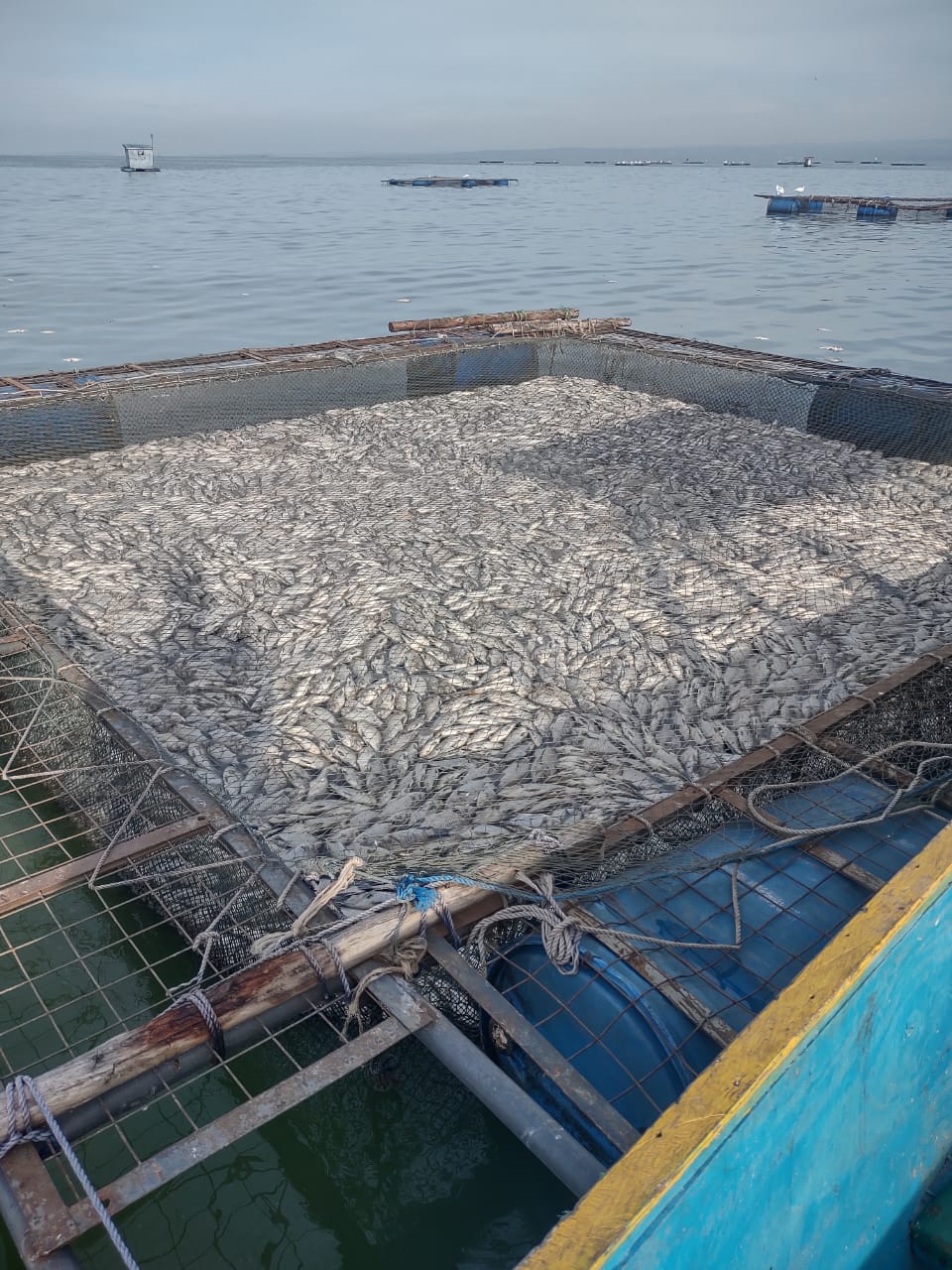KMFRI develops tool to boost cage fish farming in L.Victoria
KNA by Chris Mahandara
The Kenya Marine and Fisheries Research Institute (KMFRI) has created a map to guide the installation of fish cages in Lake Victoria.
This follows massive fish kills in the lake leading to farmers in Kisumu and Busia Counties suffer losses worth millions of shillings.
KMFRI's Fresh Water Systems Research Director, Dr. Christopher Aura, has identified ideal locations for cage fish farming in a lake, ensuring maximum production and risk mitigation.
He said the locations have been mapped through research and consideration of economic factors to make the venture profitable.
“Research has informed mapping by considering factors such as water quality, depth, security, and proximity to landing sites," he said.
Additionally, he added that the mapping also considered fish breeding grounds and currents in the lake which led to upwelling, a natural phenomenon where deep cold water rises to the surface.
On the other hand, the recent massive fish kills in the lake in Busia County are attributed to upwelling.
"When upwelling occurs and deep water comes to the surface it leads to fish kills because the water lacks sufficient oxygen due to decomposition of organic matter which depletes oxygen," he said.
The phenomenon, which has been documented in Lake Victoria since 1990, primarily occurs in May, June, September, and October.
"This phenomenon is not new. It occurs even in the natural environment. The reason why we are having massive fish kills in cages when upwelling occurs is because the fish cannot escape when there is oxygen deficiency," he said.
According to the suitability map, farmers have been advised not to place cages in shallow water since a depth of 6-10 meters though suitable, is prone to negative effects of upwelling.
Meanwhile, speaking in Kisumu during the Lake Victoria Aquaculture Forum Dr. Aura asked farmers to join hands and install cages at the locations identified by the agency to benefit from the venture.
"Locations are deep waters are the most suitable. However, it requires a lot of resources in terms of constructing cages, security and surveillance measures," he said.
He urged farmers to invest in oxygen meters and regularly check oxygen levels in the cages to avoid losing their stocks, adding that farmers must invest in cold storage facilities to harvest and store their fish in the event of an emergency.
Lastly, "Farmers must also regularly check on the quality of water and make informed decisions to avoid incurring losses," he said.

